縦縞とチェックのアシンメトリーの着物。An asymmetrical kimono with vertical stripes and checks.
内揚の接ぎから上をゆず色の縦縞の先染めしじらにしてしじら織の白地のチェック格子を下にした、上と下が非対称のアシンメトリーの着物です。
以下はこの着物の特長になります。
使用した生地しじら織で木綿100%です。
販売中のリネンのアシンメトリーの着物と同様に肩幅と後幅が同寸にしました。
そうすることで袖付の処の従来の着物の様に前幅が広がらず、胸廻りの身幅をスリムにする事が出来ました。。
この着物も上前の衽の合褄にポケットが付いています。
ここにスマートフォンなどが収納出来ます。
下前の共衿の下の内側から衿芯が差し込めます
そうする事で浴衣的な硬い衿にする事も出来ます。
この着物は背縫いが無く背縫いの縫い目が痛む事が無いので居敷当は不要になります。
洋服地を使う事で背縫いが無い着物を創る事が出来ました。
衿肩廻りは肩当布で補強しています。
身頃と肩当布の縦縞模様も柄合わせをしました。
水通しをして生地を縮めてから仕立てたので自宅で洗濯出来ます。
但し縮めた生地は伸びやすくこの着物は身丈で5分(1.89cm)裄で1分(0.378cm)位長くなっています。
家庭で手作りしたお洒落な普段着感覚の着物なので、寸法に神経質な方は購入しない方が良いと思います。
重さは510gでやや薄く軽い感じの単衣の着物です。
着物はワンピースなので洋服の様にトップスとスカートまたはパンツの様な配色のコーディネイトにするには袴が必要です。
この着物は内揚の処で色柄が異なる二種類の生地を接ぎ合わたので、袴を着用しなくてもその様な配色のコーディネイトが実現出来ました。
こんな事が出来たのも着物を創るのに着尺(反物)にこだわらず、使う生地を洋服地まで広げたからだと思います。
それと洋服地から着物を創るのにはミシンが必要だと思いがちですが手縫いでも十分に創る事が出来ます。
着こなしも肌襦袢、長襦袢、長着、羽織またはコートなどにこだわなくても手持ちの洋服と自由に組み合わせが楽めるイメージでこの着物を創りました。
一般的な単衣の着物の袖口の三つ折りぐけの幅は1分(0.378cm)位にしますが、この着物の袖口の三つ折りぐけの太さは生地の性質を考えて3分(1.134cm)弱とあえて太くしました。
一般的な単衣の着物の褄下の三つ折りぐけのくけ幅は2分5厘(0.945cm)から3分(1.134cm)にします。
そして裾の三つ折りぐけの太さは3分(1.134cm)にします。
しかしこの着物は袖口の三つ折りぐけと同様に生地の性質を考えて、褄下の三つ折りぐけのくけ幅は1寸(3.78cm)にして、裾の三つ折りぐけのくけ幅も2寸(7.56cm)と太くしました。
着物を仕立てる時は肩幅や袖幅、後幅や前幅等、幅に関するサイズは縫代の幅を広くするか細くする事で調節します。
この着物は洋服地で創ったのでそれらのサイズの調節は事前に各パーツに最適な縫代の幅にして、各パーツの裁切幅を決めて裁断しました。
帯を締めずにトルソーにはおらせて前面と背中側を撮影した映像をYoutubeにアップロードしました。
後日着付けの先生にお願いして帯等とコーディネイトした映像を撮影して公開するつもりです。
体型が身長163cmでバスト81cmのヒップ90cm位の方のサイズの着物です。
着物の寸法は身丈が肩から4尺3寸2分、163cm。裄は1尺8寸、68cm。後幅7寸7分、29cm。前幅6寸1分、23cmです。
価格は税込み2万8千円で岩佐和裁で販売しています。
This asymmetrical kimono has vertical yuzu-colored stripes of yarn-dyed shijira fabric above the seam of the inner hem, and a white checkered plaid of shijira weave underneath.
The following are the features of this kimono.
The fabric used is 100% cotton shijira weave.
The shoulder width and back width are the same as the asymmetrical linen kimono currently on sale.
By doing so, the front width does not widen like traditional kimonos with sleeves, and the width around the chest can be slimmed down.
This kimono also has a pocket on the hem of the upper front.
You can store your smartphone here.
A collar stiffener can be inserted from the inside under the collar of the lower front.
This kimono has no back seam, so the back seam will not be damaged, so there is no need for a gusset.
By using fabric other than kimono fabric, we were able to create a kimono without a back seam.
The collar and shoulders are reinforced with shoulder pads.
The vertical stripes on the body and shoulder pads are also matched.
The fabric is shrunk by soaking it in water, so it can be washed at home.
However, the shrunken fabric is prone to stretching, so this kimono is about 1.89 cm longer in length and 0.378 cm longer at the cervicale to wrist.
This is a stylish, homemade kimono with a casual feel, so if you are concerned about the size, I recommend not buying it.
It weighs 510g and is a single-layer kimono that is slightly thin and light.
The kimono is a one-piece, so you will need hakama to coordinate the color scheme of a top and skirt or pants like Western clothes.
This kimono has two different colors and patterns sewn together at the inside, so you can coordinate the color scheme without wearing hakama.
I think this was possible because I didn't stick to kimono fabrics when making the kimono, but expanded the fabric used to cover the entire clothing fabric.
Also, while one might think that a sewing machine is necessary to make a kimono from something other than kimono fabric, it can be done just fine by hand.
This kimono was finished entirely by hand, without the use of a sewing machine.
I created this kimono with the idea that it can be easily combined with clothes you already have, without having to be particular about undergarments, long undergarments, long kimonos, haori or coats.
The width of the triple fold seams at the cuffs of a typical hitoe kimono is about 0.378 cm, but the width of the triple fold seams at the cuffs of this kimono was intentionally made just under 1.134 cm, taking into consideration the properties of the fabric.
The width of the triple fold seams at the bottom of the hem of a typical hitoe kimono is 0.945 cm to 1.134 cm.
And the width of the triple fold seams at the hem is 3 bu 1.134 cm.
However, for this kimono, as with the triple-folded cuffs, the width of the triple-folded hemline is 3.78 cm, and the width of the triple-folded hemline is 7.56 cm, considering the nature of the fabric.
When making a kimono, the shoulder width, sleeve width, back width, front width, etc. are adjusted by widening or narrowing the seam allowance.
Since this kimono was made from a fabric that is not for kimonos, the adjustment of the sizes was done in advance by setting the optimal seam allowance width for each part, and cutting each part after deciding the cutting width.
I put the kimono on a torso without fastening the obi and uploaded a video of the front and back to YouTube.
I plan to ask a kimono dressing teacher to film and release a video of the kimono coordinated with the obi, etc. at a later date.
This kimono is the size of a person with a height of 163 cm, a bust of 81 cm, and a hip of about 90 cm.
The kimono measures 163 cm in length from shoulder to wrist. Cervicale to wrist is 68 cm. Rear width is 29cm. Front width is 23cm.
The price is 28,000 yen including tax and it is on sale at IWASA WASAI.
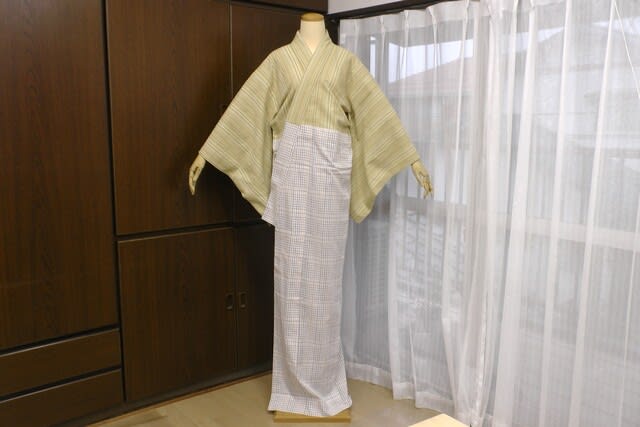
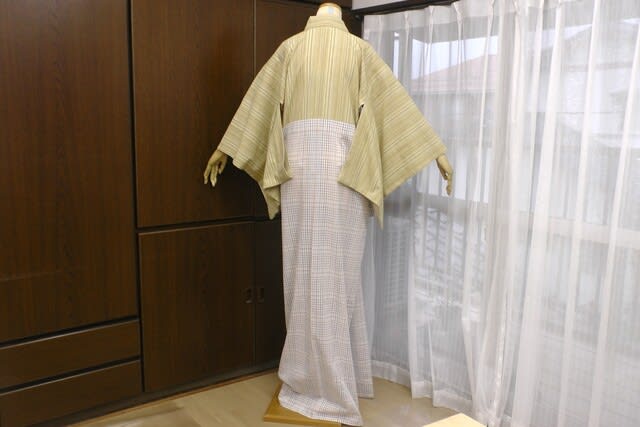
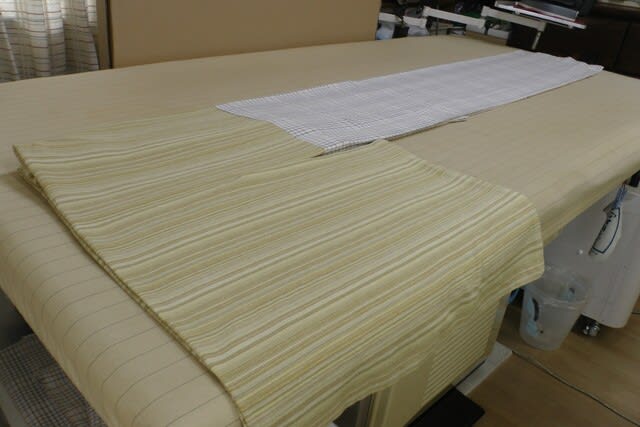
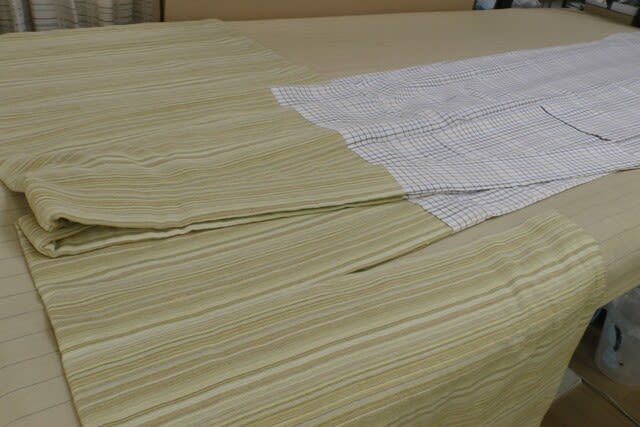
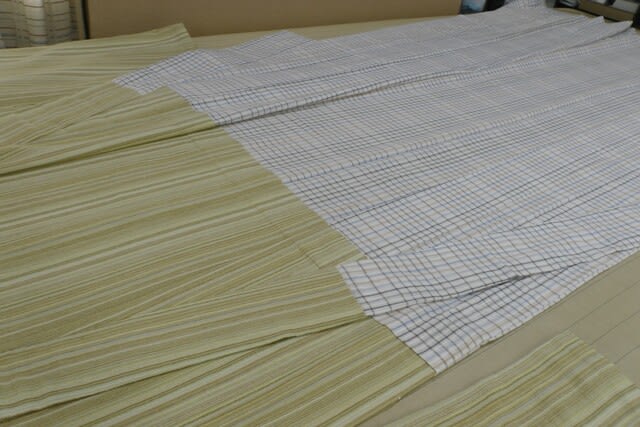
内揚の接ぎから上をゆず色の縦縞の先染めしじらにしてしじら織の白地のチェック格子を下にした、上と下が非対称のアシンメトリーの着物です。
以下はこの着物の特長になります。
使用した生地しじら織で木綿100%です。
販売中のリネンのアシンメトリーの着物と同様に肩幅と後幅が同寸にしました。
そうすることで袖付の処の従来の着物の様に前幅が広がらず、胸廻りの身幅をスリムにする事が出来ました。。
この着物も上前の衽の合褄にポケットが付いています。
ここにスマートフォンなどが収納出来ます。
下前の共衿の下の内側から衿芯が差し込めます
そうする事で浴衣的な硬い衿にする事も出来ます。
この着物は背縫いが無く背縫いの縫い目が痛む事が無いので居敷当は不要になります。
洋服地を使う事で背縫いが無い着物を創る事が出来ました。
衿肩廻りは肩当布で補強しています。
身頃と肩当布の縦縞模様も柄合わせをしました。
水通しをして生地を縮めてから仕立てたので自宅で洗濯出来ます。
但し縮めた生地は伸びやすくこの着物は身丈で5分(1.89cm)裄で1分(0.378cm)位長くなっています。
家庭で手作りしたお洒落な普段着感覚の着物なので、寸法に神経質な方は購入しない方が良いと思います。
重さは510gでやや薄く軽い感じの単衣の着物です。
着物はワンピースなので洋服の様にトップスとスカートまたはパンツの様な配色のコーディネイトにするには袴が必要です。
この着物は内揚の処で色柄が異なる二種類の生地を接ぎ合わたので、袴を着用しなくてもその様な配色のコーディネイトが実現出来ました。
こんな事が出来たのも着物を創るのに着尺(反物)にこだわらず、使う生地を洋服地まで広げたからだと思います。
それと洋服地から着物を創るのにはミシンが必要だと思いがちですが手縫いでも十分に創る事が出来ます。
着こなしも肌襦袢、長襦袢、長着、羽織またはコートなどにこだわなくても手持ちの洋服と自由に組み合わせが楽めるイメージでこの着物を創りました。
一般的な単衣の着物の袖口の三つ折りぐけの幅は1分(0.378cm)位にしますが、この着物の袖口の三つ折りぐけの太さは生地の性質を考えて3分(1.134cm)弱とあえて太くしました。
一般的な単衣の着物の褄下の三つ折りぐけのくけ幅は2分5厘(0.945cm)から3分(1.134cm)にします。
そして裾の三つ折りぐけの太さは3分(1.134cm)にします。
しかしこの着物は袖口の三つ折りぐけと同様に生地の性質を考えて、褄下の三つ折りぐけのくけ幅は1寸(3.78cm)にして、裾の三つ折りぐけのくけ幅も2寸(7.56cm)と太くしました。
着物を仕立てる時は肩幅や袖幅、後幅や前幅等、幅に関するサイズは縫代の幅を広くするか細くする事で調節します。
この着物は洋服地で創ったのでそれらのサイズの調節は事前に各パーツに最適な縫代の幅にして、各パーツの裁切幅を決めて裁断しました。
帯を締めずにトルソーにはおらせて前面と背中側を撮影した映像をYoutubeにアップロードしました。
後日着付けの先生にお願いして帯等とコーディネイトした映像を撮影して公開するつもりです。
体型が身長163cmでバスト81cmのヒップ90cm位の方のサイズの着物です。
着物の寸法は身丈が肩から4尺3寸2分、163cm。裄は1尺8寸、68cm。後幅7寸7分、29cm。前幅6寸1分、23cmです。
価格は税込み2万8千円で岩佐和裁で販売しています。
This asymmetrical kimono has vertical yuzu-colored stripes of yarn-dyed shijira fabric above the seam of the inner hem, and a white checkered plaid of shijira weave underneath.
The following are the features of this kimono.
The fabric used is 100% cotton shijira weave.
The shoulder width and back width are the same as the asymmetrical linen kimono currently on sale.
By doing so, the front width does not widen like traditional kimonos with sleeves, and the width around the chest can be slimmed down.
This kimono also has a pocket on the hem of the upper front.
You can store your smartphone here.
A collar stiffener can be inserted from the inside under the collar of the lower front.
This kimono has no back seam, so the back seam will not be damaged, so there is no need for a gusset.
By using fabric other than kimono fabric, we were able to create a kimono without a back seam.
The collar and shoulders are reinforced with shoulder pads.
The vertical stripes on the body and shoulder pads are also matched.
The fabric is shrunk by soaking it in water, so it can be washed at home.
However, the shrunken fabric is prone to stretching, so this kimono is about 1.89 cm longer in length and 0.378 cm longer at the cervicale to wrist.
This is a stylish, homemade kimono with a casual feel, so if you are concerned about the size, I recommend not buying it.
It weighs 510g and is a single-layer kimono that is slightly thin and light.
The kimono is a one-piece, so you will need hakama to coordinate the color scheme of a top and skirt or pants like Western clothes.
This kimono has two different colors and patterns sewn together at the inside, so you can coordinate the color scheme without wearing hakama.
I think this was possible because I didn't stick to kimono fabrics when making the kimono, but expanded the fabric used to cover the entire clothing fabric.
Also, while one might think that a sewing machine is necessary to make a kimono from something other than kimono fabric, it can be done just fine by hand.
This kimono was finished entirely by hand, without the use of a sewing machine.
I created this kimono with the idea that it can be easily combined with clothes you already have, without having to be particular about undergarments, long undergarments, long kimonos, haori or coats.
The width of the triple fold seams at the cuffs of a typical hitoe kimono is about 0.378 cm, but the width of the triple fold seams at the cuffs of this kimono was intentionally made just under 1.134 cm, taking into consideration the properties of the fabric.
The width of the triple fold seams at the bottom of the hem of a typical hitoe kimono is 0.945 cm to 1.134 cm.
And the width of the triple fold seams at the hem is 3 bu 1.134 cm.
However, for this kimono, as with the triple-folded cuffs, the width of the triple-folded hemline is 3.78 cm, and the width of the triple-folded hemline is 7.56 cm, considering the nature of the fabric.
When making a kimono, the shoulder width, sleeve width, back width, front width, etc. are adjusted by widening or narrowing the seam allowance.
Since this kimono was made from a fabric that is not for kimonos, the adjustment of the sizes was done in advance by setting the optimal seam allowance width for each part, and cutting each part after deciding the cutting width.
I put the kimono on a torso without fastening the obi and uploaded a video of the front and back to YouTube.
I plan to ask a kimono dressing teacher to film and release a video of the kimono coordinated with the obi, etc. at a later date.
This kimono is the size of a person with a height of 163 cm, a bust of 81 cm, and a hip of about 90 cm.
The kimono measures 163 cm in length from shoulder to wrist. Cervicale to wrist is 68 cm. Rear width is 29cm. Front width is 23cm.
The price is 28,000 yen including tax and it is on sale at IWASA WASAI.















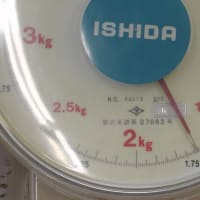


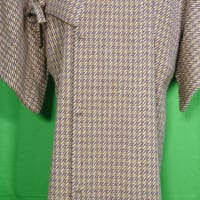


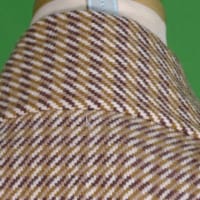









※コメント投稿者のブログIDはブログ作成者のみに通知されます